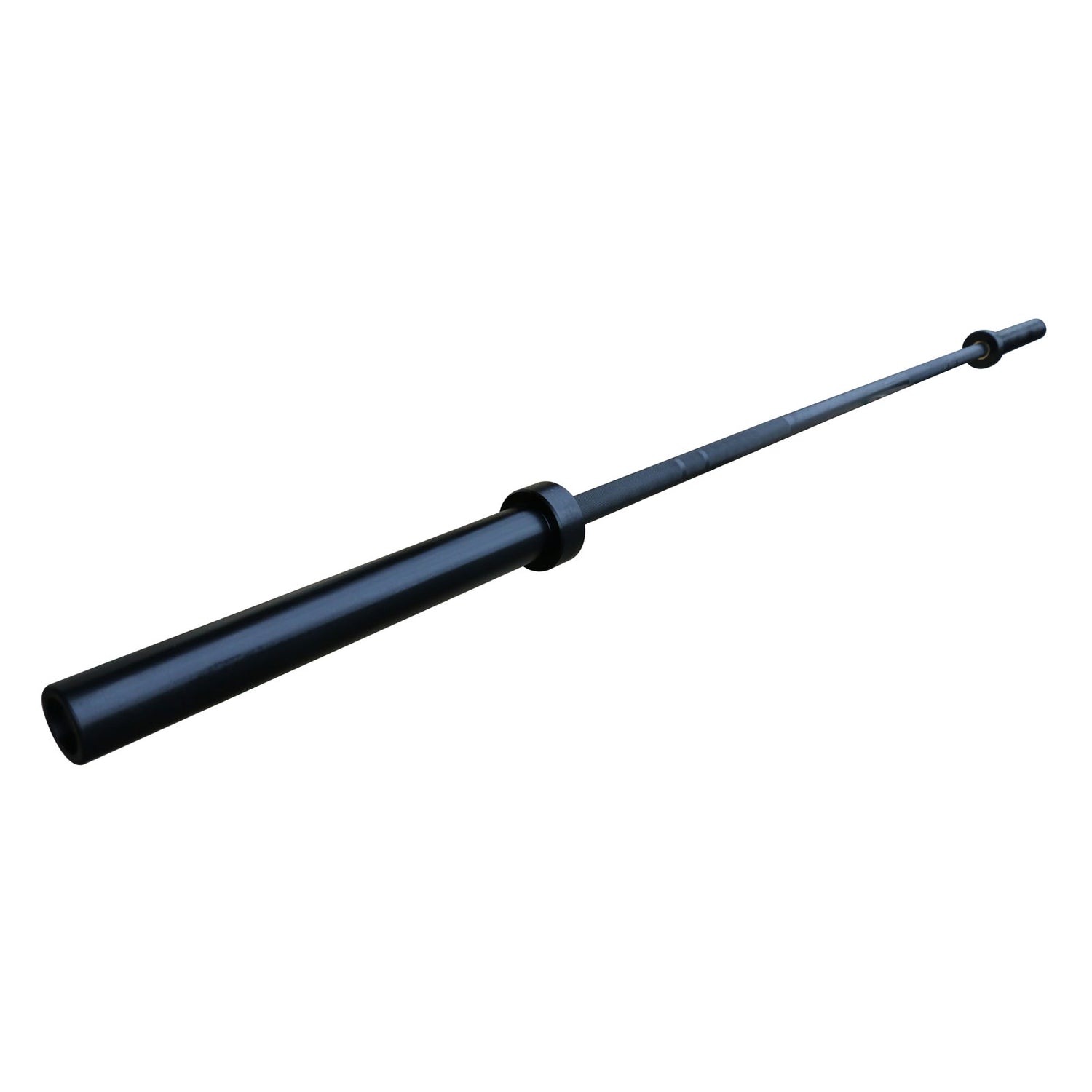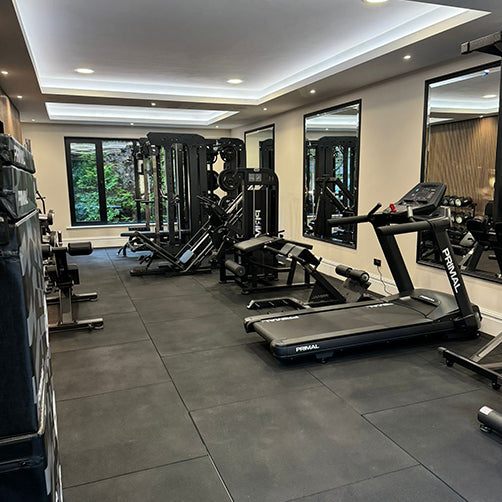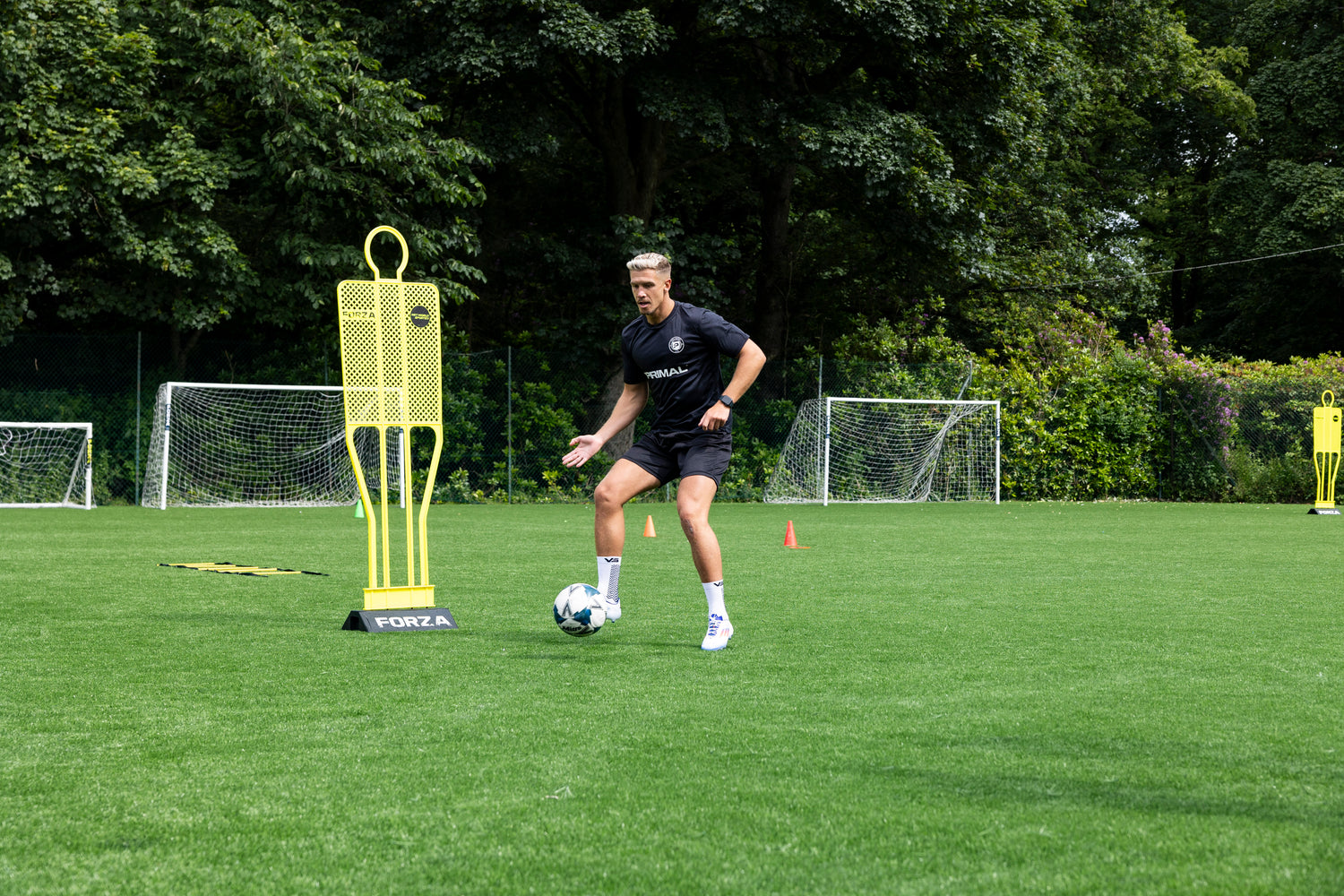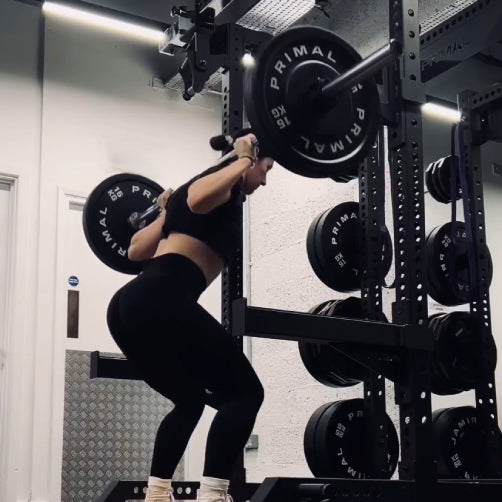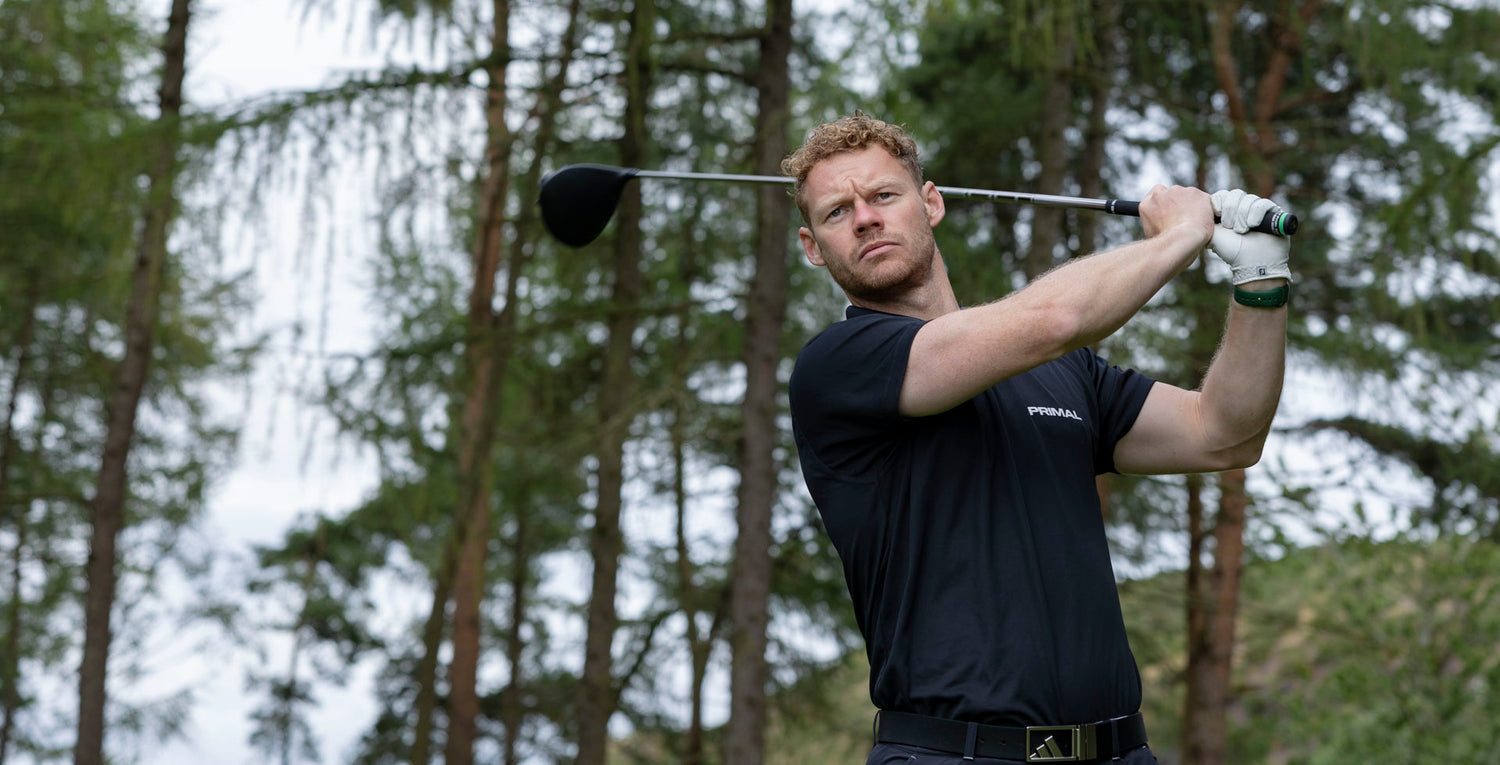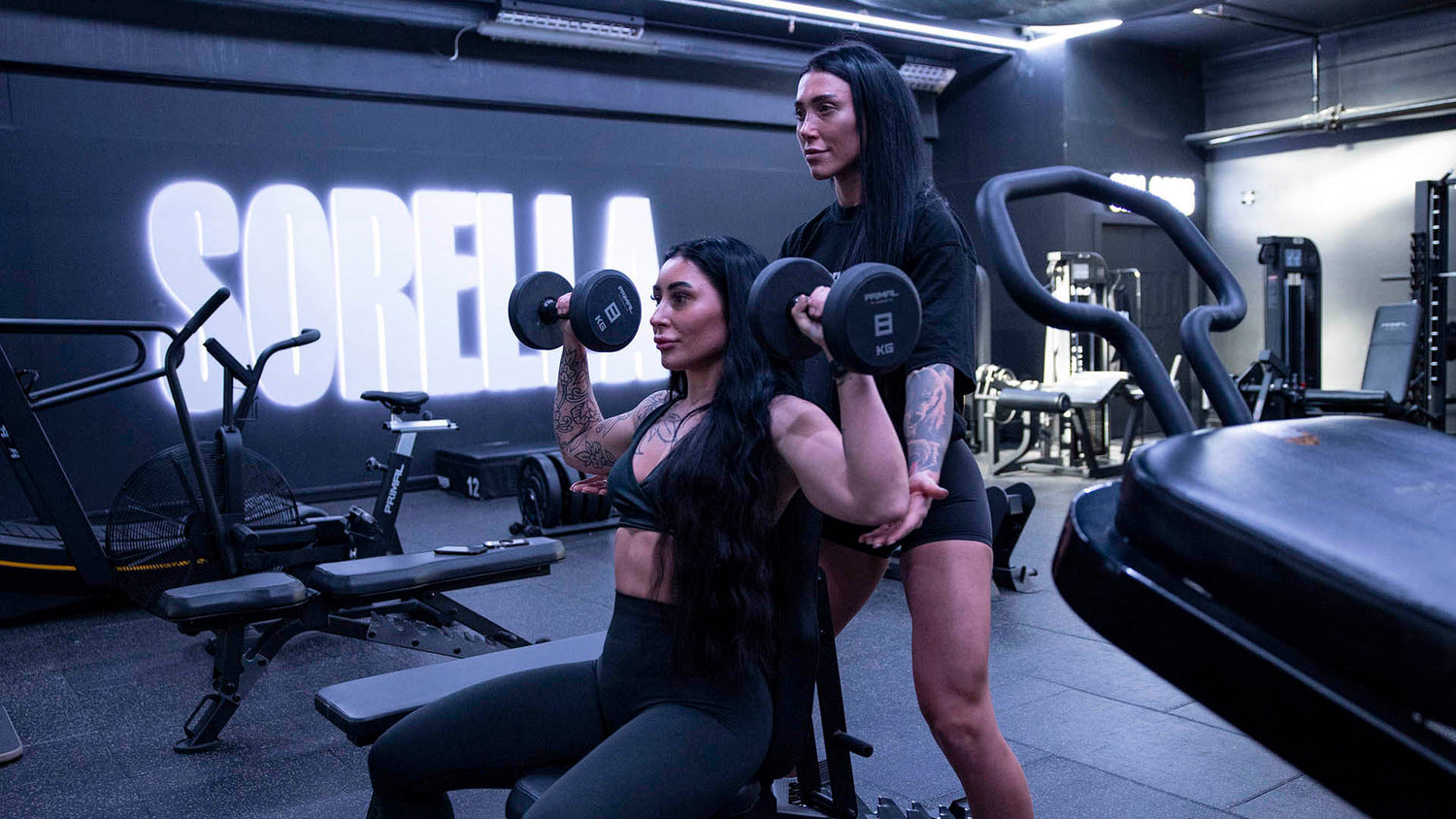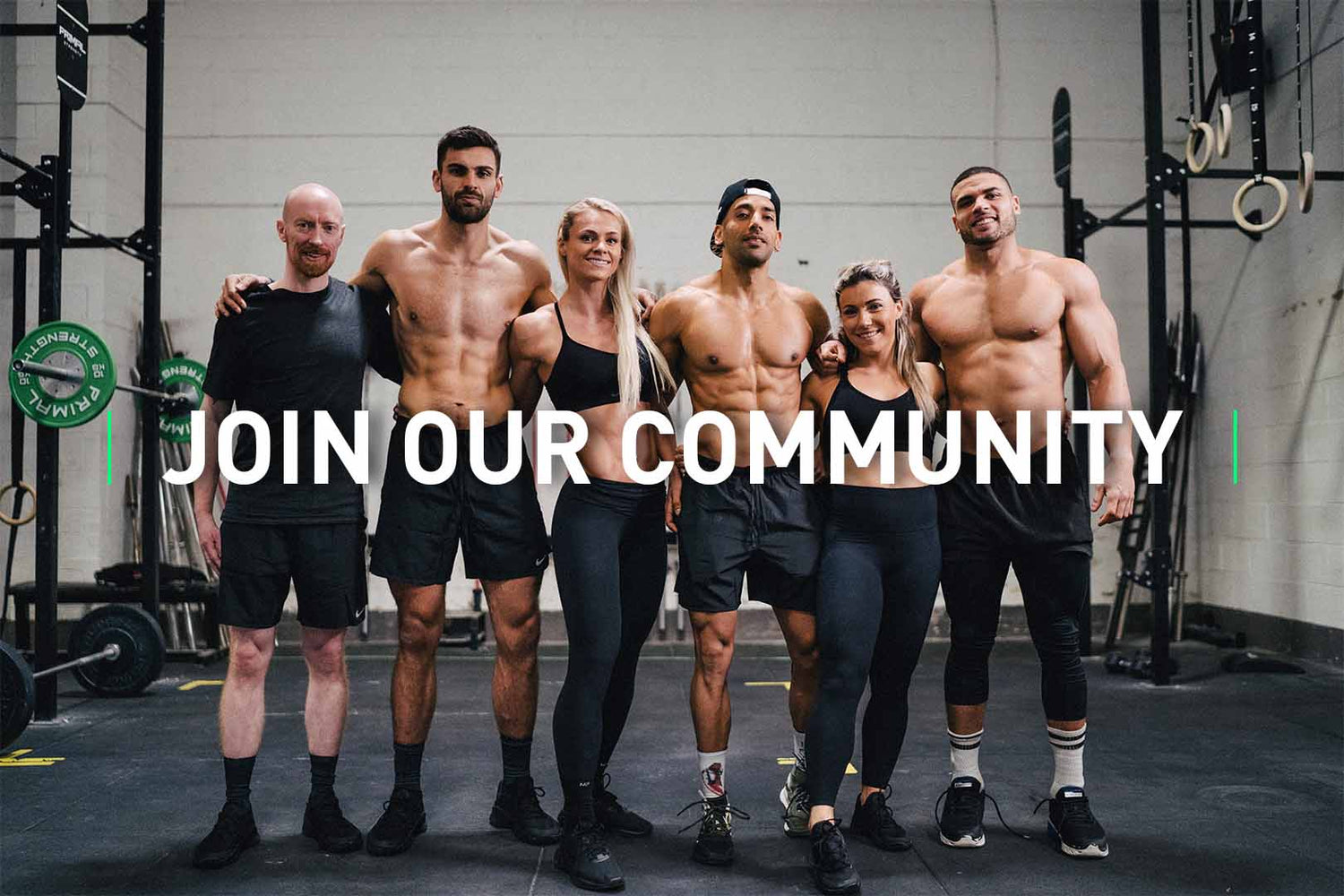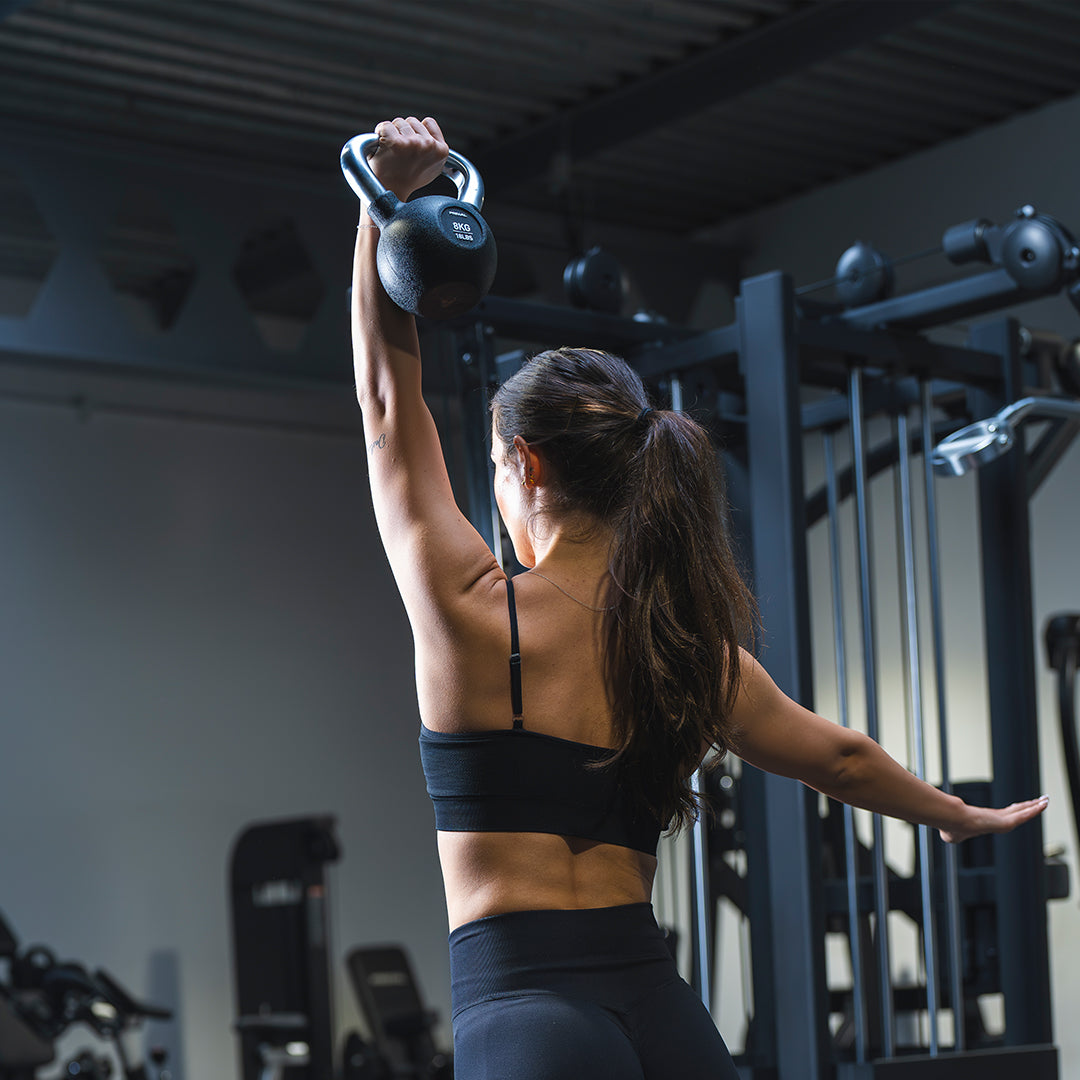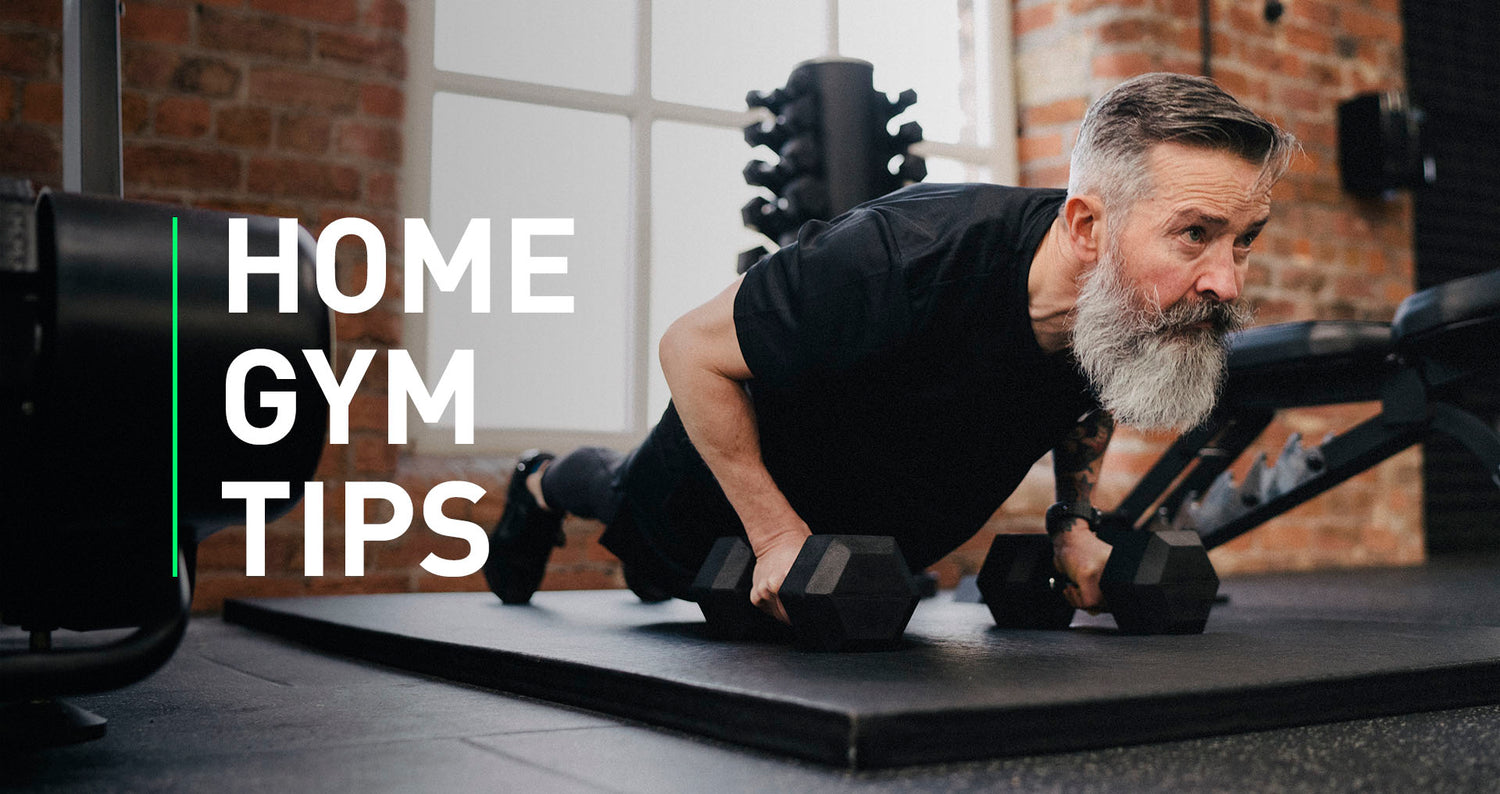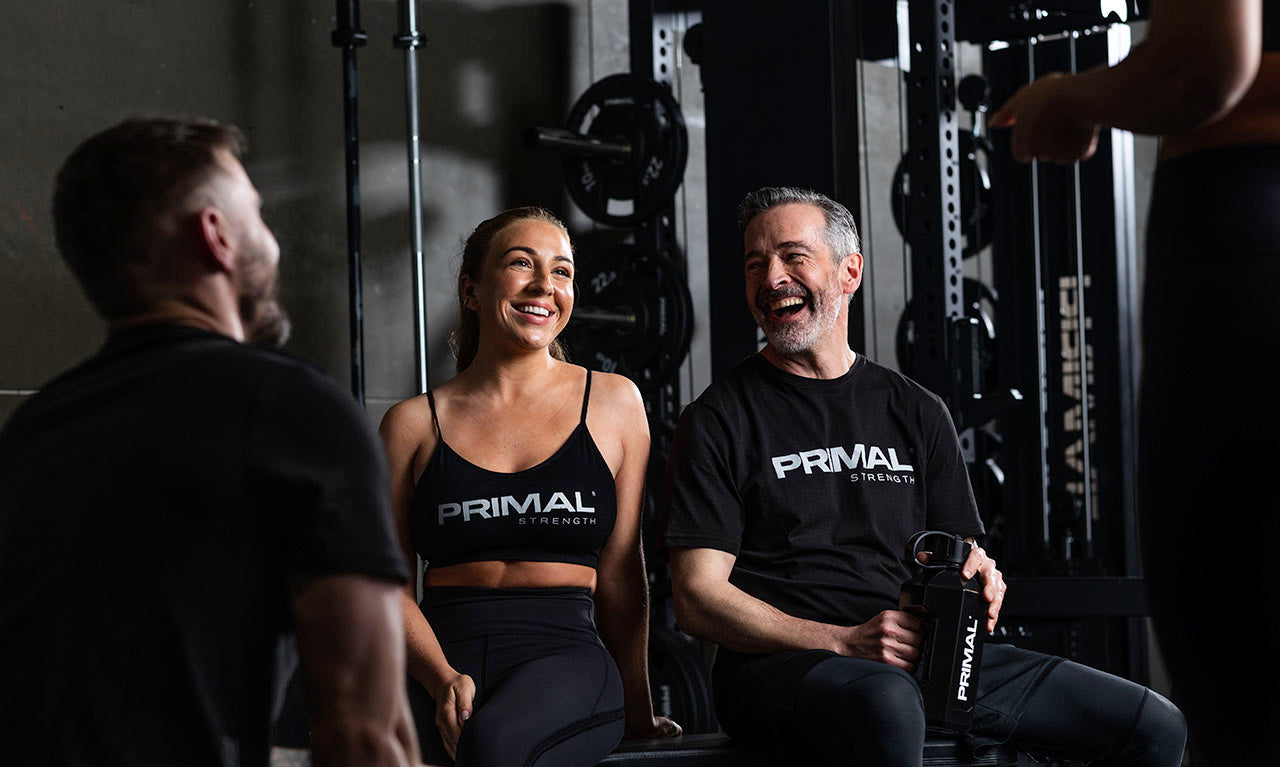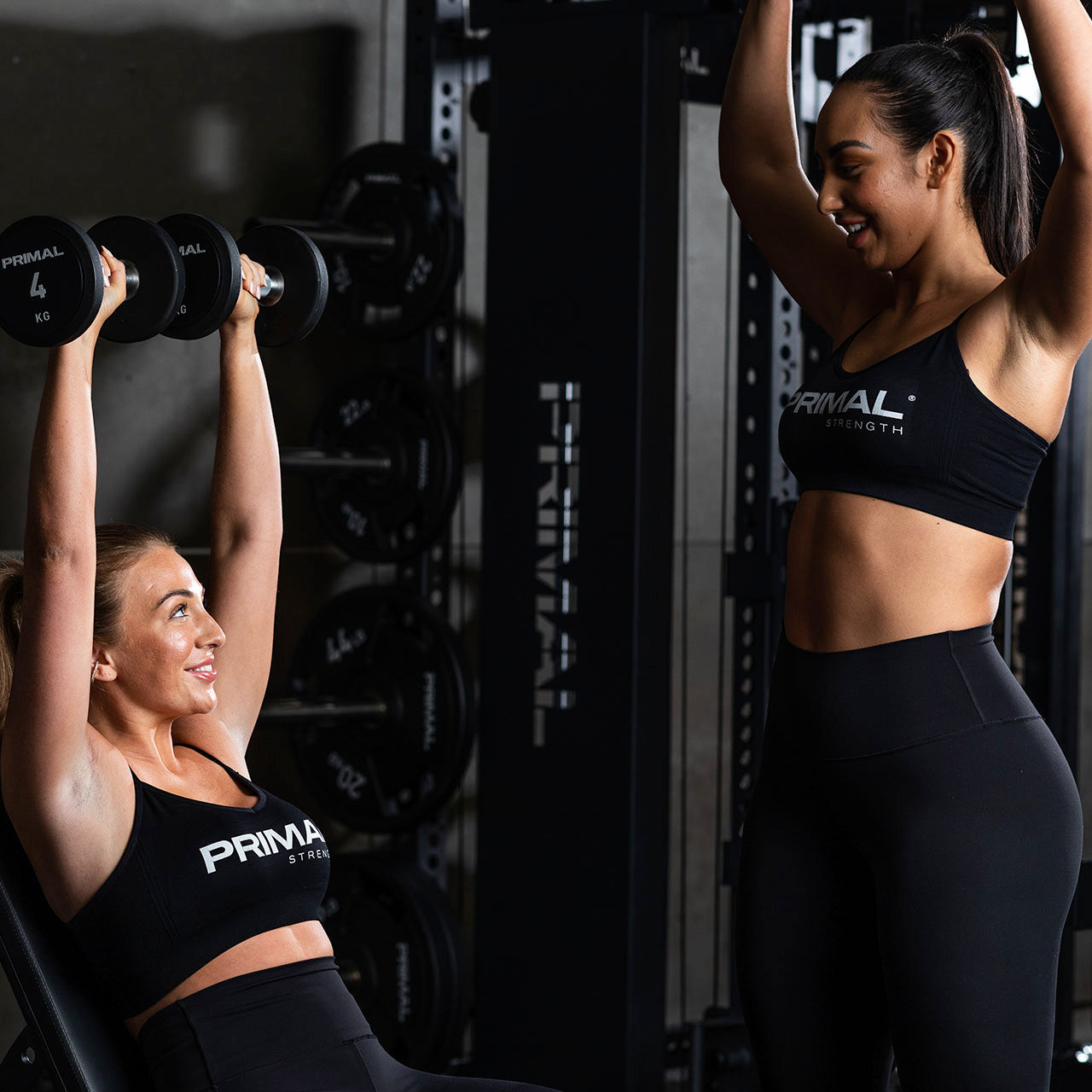
Barbell Buying Guide
This guide will walk you through everything you need to know when buying a barbell. From understanding key features like whip, knurling and spin, to comparing different types of bars, to making the right choice based on your training style or environment. Strength starts here. Let’s break it down.




INTRODUCTION
Choosing the right barbell isn’t just about weight. It’s about performance, safety, and finding the right fit for your training style or facility. Whether you’re building a home gym, running a PT studio, or outfitting a full commercial space, the barbell is the centrepiece of strength training.
But not all barbells are created equal. The right spec can make the difference between smooth lifts and missed reps. Between a bar that lasts a year, and one that lasts a lifetime.
UNDERSTANDING BARBELL FEATURES
When it comes to barbells, small details matter. Here are the specs you’ll see again and again and why they’re important.


TYPES OF BARBELLS

The classic all-rounder. 20kg (men’s) and 15kg (women’s) Olympic bars are the gold standard for general strength and athletic training. With good whip, solid knurling, and smooth spin, they are versatile enough for squats, presses, pulls, and Olympic lifts.

Stiffer, heavier-duty bars built for maximum loads. Typically feature centre knurling and less spin. Designed for stability under squats, deadlifts, and bench press.

Deadlift bars are longer (about 2.3m) and thinner (around 25mm diameter), giving them more whip. This allows you to build tension before the plates leave the floor, making heavy lifts more achievable. They require solid technique and control but are ideal for lifters chasing big pulls.

Specialist bars offer comfort, variety, and targeted training benefits beyond the standard Olympic bar. Here are the most common types and what they’re used for.
EZ Bar
Recognisable by its zig-zag shape, the EZ bar takes pressure off wrists and elbows. It’s ideal for bicep curls, tricep extensions, and other arm-focused accessory work. Not for heavy compound lifts, but great for joint-friendly arm training.
Technique Bar
A lighter version of a standard barbell (5–10kg), designed for beginners, youth lifters, or anyone perfecting form. Commonly used for Olympic lifts and foundational movements like squats or presses. It feels like a full bar but makes learning safer and easier.
Swiss Bar
Also called a multi-grip bar, the Swiss bar has neutral handles that reduce strain on shoulders, elbows, and wrists. Perfect for pressing variations, rows, and curls. The multiple grip options add variety and comfort, especially for upper-body training.
Hex (Trap) Bar
A hexagonal bar you stand inside, with side handles for a neutral grip. Best known for deadlifts, as it promotes an upright torso and reduces lower-back stress. Also useful for shrugs, carries, and some presses. A safe, joint-friendly way to lift heavy.
Safety Squat Bar
Features padded shoulder rests and front handles, making squats more comfortable and accessible. It encourages an upright position, reducing shoulder strain while still targeting legs and posterior chain. Great for lifters with mobility issues or those returning from injury.
Fixed Barbell
Pre-loaded bars with set weights (10–50kg). Convenient for curls, presses, rows, and lunges without the need to load plates. Not designed for heavy compound lifts, but perfect for quick, versatile accessory work.

For a complete breakdown of the differences between the barbells we offer please see the table below:

KEY THINGS TO CONSIDER WHEN BUYING A BARBELL
Type of Training

Olympic bars are built for dynamic lifts like the snatch and clean & jerk. They’re usually 7ft long, with enough flexibility (whip) to generate speed under the bar. Knurling should be firm but not overly aggressive, and the sleeves need smooth rotation to protect your wrists during fast transitions.

Power bars are designed for maximum stability under heavy squats, bench presses, and deadlifts. They’re stiff, 7ft long, and 20kg in weight, with strong but less aggressive knurling than Olympic bars. Sleeve rotation is limited to keep the bar stable under load.

For functional training, versatility is key. A multipurpose Olympic bar with medium knurling and smooth spin will handle everything from cleans to deadlifts. Look for durable coatings like zinc or ceramic since the bar will take frequent drops.

If you’re lifting for strength and fitness, choose a reliable multipurpose bar. A medium knurl, balanced stiffness, and solid durability will support a wide range of movements without overcomplicating your training.
Weight Capacity
Every bar has a maximum load rating. For most lifters, this won’t be a limiting factor, but if you’re training for powerlifting or pushing serious numbers, it matters. Power bars often exceed 600kg capacity, while entry-level bars might max out at 200–300kg. Choosing a bar rated above your training load ensures it won’t bend or fail under pressure.
Bar Length
Standard Olympic and powerlifting bars are 7ft long, while deadlift bars stretch to 7.5ft for added whip. Space can also dictate what works for you. Home gym users sometimes opt for shorter bars (5–6ft) to save room, but these usually come with lower weight capacities (50–90kg). Shorter bars are fine for beginners but may limit long-term progression. Always balance convenience with future-proofing your setup.
Materials and Coating
Barbell coating affects durability, grip, and maintenance.
Chrome: Smooth and rust-resistant, but can get slippery during high-rep or sweaty sessions.
Zinc: Durable and corrosion-resistant with a textured finish for reliable grip. Excellent for versatile training.
Ceramic or Teflon: Premium options that resist scratches and corrosion while keeping a clean finish even under heavy use.
Bare Steel: Delivers the best raw grip but requires regular oiling and care. Traditional, but less practical for most environments. PRIMAL does not offer bare steel bars as they require more upkeep and advanced handling.
Summary of Key Considerations
Your barbell should match your training. Olympic lifters need whip and spin. Powerlifters need stiffness and stability. Functional athletes need versatility. General users need balance and durability. Specialty bars provide solutions for comfort and muscle targeting. Consider the weight rating, bar length, and coating carefully, especially if you’re investing for the long term or equipping a gym. With the right choice, your barbell will be more than a piece of steel. It will be the foundation of your strength.
Choosing the Right Barbell for Your Training Environment
The best barbell for your gym depends on who’s using it, how often, and the demands placed on the equipment. Here’s what to consider across different training environments.

Space: A full-size Olympic bar is 7ft and needs room for racks and plates. If space is tight, a 6ft bar can work, but check compatibility with racks and plates.
Storage: Bars should never be left on the floor, as this can cause bending. Wall-mounted racks or vertical stands keep them safe and save space.
Budget vs Use: If you’re training for general fitness, an entry-level barbell is enough. But if you lift heavier or train frequently, investing in a higher-quality bar pays off in durability. A good bar can last for years, making it cheaper in the long run.
Versatility: For most home gyms, a multipurpose barbell covers squats, presses, and deadlifts. You don’t need multiple bars unless you specialise in Olympic lifting or powerlifting.
Finish & Maintenance: Garage or shed gyms face humidity, so look for zinc, chrome, or stainless steel coatings to resist rust. Bare steel feels great but requires regular oiling.

Space & Studio Flow: Studios often run tight on space. Shorter multipurpose bars or fixed preloaded barbells (5–50kg) allow quick transitions between clients without clutter. Free weights usually take priority over machines, and barbells are essential for versatile compound lifts.
Budget & Durability: Most studios can manage with Olympic bars rated around 250kg. But if you train stronger or more advanced clients, look at higher-capacity bars (up to 600–900kg). Prioritise build quality and warranties that cover light commercial use, since equipment will be used daily by multiple clients.
Studio Priorities: Durability, speed, and versatility matter most. A hybrid multipurpose bar works across client needs and maximises investment.

Users: A broad mix of beginners and experienced lifters.
Key Needs: Versatility and durability. A 20kg, 7ft Olympic bar is the best all-rounder—suitable for squats, deadlifts, presses, and cleans. Medium knurling ensures good grip without being harsh, and bars should be user-friendly for everyone.
Durability: High-traffic gyms need bars with tough coatings like zinc or ceramic, which resist rust and maintain appearance despite heavy use.
Specialty Bars: Keep extras simple. An EZ Curl Bar or Swiss Bar can add value, but the focus should be on core equipment.
Warranty: With constant use, bars need at least a 3–5 year warranty to cover wear and tear.


Users: Athletes and advanced lifters pushing serious loads.
Key Needs: Specialised bars are essential. Powerlifting bars for maximal strength, Olympic bars for dynamic lifts, and trap/hex bars to reduce spinal load during deadlifts. Safety Squat and Camber Bars also help athletes with mobility or shoulder issues.
Durability: These bars take heavy punishment. Opt for high-quality steel with strong coatings (ceramic or zinc) and high weight ratings.
Warranty & Support: Look for 5+ years, with cover for bends, breakage, and sleeve issues. Aftercare and quick support are crucial.
Maintenance: Regular inspection is vital. Bars may need oiling to prevent rust, especially with bare steel options.

Users: Casual lifters and beginners.
Key Needs: Accessibility and simplicity. 15kg or 20kg Olympic bars (6.6ft–7ft) are ideal—light enough for newcomers, strong enough for general strength training.
Durability: Zinc or ceramic coatings are recommended, as equipment may not always be cleaned or maintained between uses.
Specialty Bars: Minimal. An EZ Curl Bar or Swiss Bar may be useful, but the focus should stay on core lifts with Olympic bars.
Warranty: A 2–3 year warranty is typically sufficient for this level of use.
Space: Where space is tight, shorter bars (5–6ft) can work, but remember they limit weight capacity.
General Considerations Across All Gyms
• Know Your Users: Tailor bars to the people training. Beginners benefit from simplicity, while athletes need more specialised equipment.
• Specialty Bars: Add only if demand exists. Swiss Bars, Safety Squat Bars, and EZ Curl Bars have clear benefits but aren’t always necessary.
• Warranty: Always choose bars backed by solid guarantees. They’re long-term investments.
• Coatings & Materials: Zinc and ceramic offer the best balance of durability and low maintenance. Bare steel provides superior grip but requires upkeep.
• Weight Capacity: Match the bar to the loads your members will lift. Powerlifting bars handle more weight than general Olympic bars.
From commercial gyms to elite performance centres, the right barbell depends on user needs, durability, and warranty coverage. For most gyms, Olympic bars form the backbone of training. Specialty bars should be introduced where they add clear value. With the right selection, your bars won’t just last—they’ll elevate the training experience for everyone who uses them.
Final Things to Consider: Barbell Care
A quality barbell is an investment, and with a little care it can last for years. Here are the essentials:
Maintenance
- Brush the knurling: Use a nylon brush to clear chalk, sweat, and dust. This prevents buildup that leads to rust.
- Wipe it down: After training, give the bar a quick wipe with a dry cloth. A light oil rub occasionally will keep it fresh.
- Oil the sleeves: Add a drop of light oil to bushings or bearings every so often and spin the sleeves to keep them smooth.
- Watch for rust: Small spots can be brushed and oiled, but prevention is key.
Storage
Never leave a loaded bar on the floor—over time, it can bend. Proper storage keeps bars safe and your gym organised. Options include:
• Vertical holders: Space-efficient and tidy, but clean sleeves before placing them in.
• Wall-mounted racks: Keep shafts supported and off the ground.
• Gun racks: Easy access for multiple bars.

Environment
Bars hate damp conditions. If your gym is in a garage or shed, use rubber flooring, avoid concrete drops, and consider dehumidifiers or silica packs.
Simple rule: Keep your bars clean, dry, and stored correctly, and they’ll stay strong for the long haul.
Conclusion
Choosing the right barbell comes down to matching the bar to your training style, environment, and users. Olympic bars remain the most versatile option, while powerlifting, specialty, and lighter technique bars serve more specific needs. Coatings and weight capacity affect durability, and warranties are worth paying attention to in high-traffic spaces. Finally, maintenance and proper storage will keep your bars performing and looking their best.
In short: invest in the right bar, care for it well, and it will deliver strength, safety, and reliability for years.
